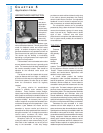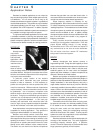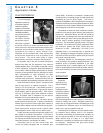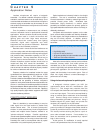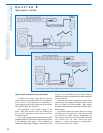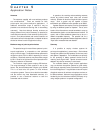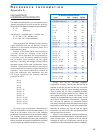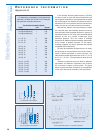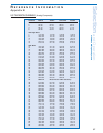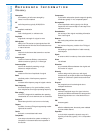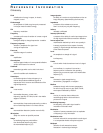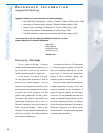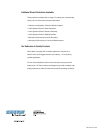
Absorption
the weakening of radio wave strength by
losses in various materials
AF
audio frequencies, typically 20-20,000 Hz.
AM
amplitude modulation
Ambient
local or background, ie. ambient noise
Amplitude
magnitude or strength of a signal or wave
AM rejection
ability of an FM receiver to reject signals from AM
transmitters and/or AM noise from electrical devices
or natural sources
Antenna
electrical circuit element that transmits or receives
radio waves
Antenna gain
measure of antenna efficiency compared to a
reference antenna, typically a 1/4 wave type
Antenna splitter
a device for electrically matching a single
antenna to multiple receivers
Attenuation
measure of the loss of amplitude of a signal
Band
a defined portion of the frequency spectrum
Bandwidth
a measure of the frequency range of a signal or device
Base frequency
the actual frequency of a crystal oscillator, usually
then multiplied to some higher operating frequency
Bias voltage
a fixed DC voltage which establishes the operating
characteristic of a circuit element such as a transistor
Bodypack
transmitter style which can be worn on the body
Capture
the effect of a strong FM signal suppressing weaker
signals at the receiver
Carrier
the basic or unmodulated radio wave
Compander
a two-step noise reduction system consisting of a
compressor in the transmitter and an expander in
the receiver
Compressor
a circuit which reduces the dynamic range of a signal by
a fixed ratio, typically 2:1 in a compander system
De-emphasis
a fixed equalization which typically rolls off high
frequencies in the second step of a two-step noise
reduction process
Demodulation
the recovery of the original modulating information
from a radio signal
Detector
the circuitry that performs demodulation
Deviation
the maximum frequency variation of an FM signal
Diffraction
the bending or partial reflection of radio waves by
metal objects
Dipole
an antenna which is made up of two active elements
Direct
not reflected
Distortion
any unwanted difference between the original and
final version of a signal
Diversity
receiver design which picks up a radio signal
simultaneously at multiple locations and intelligently
switches or combines to yield the best continuous
signal
Dropout
the complete loss of received signal due to
multipath interference
Dynamic range
maximum amplitude range of a signal or device,
generally the difference between the strongest and
weakest signals that occur or that the device can
handle
EM
electromagnetic
ERP
effective radiated power, the actual power radiated
by a transmitter antenna
Expander
a circuit which expands the dynamic range of a
signal by a finite ratio, typically 1:2 in a compander
system
Selection
and Operation
of Wireless Microphone Systems
58
R EFERENCE I NFORMATION
Glossary



